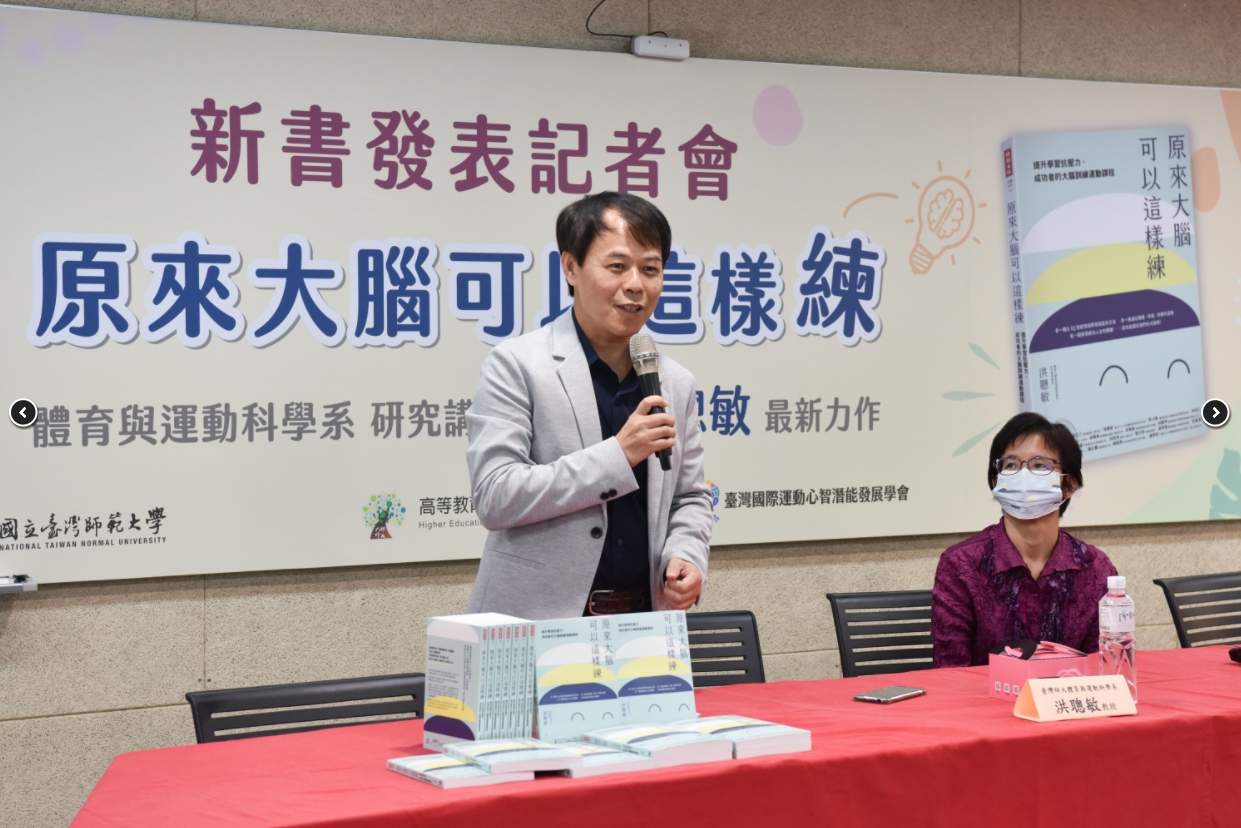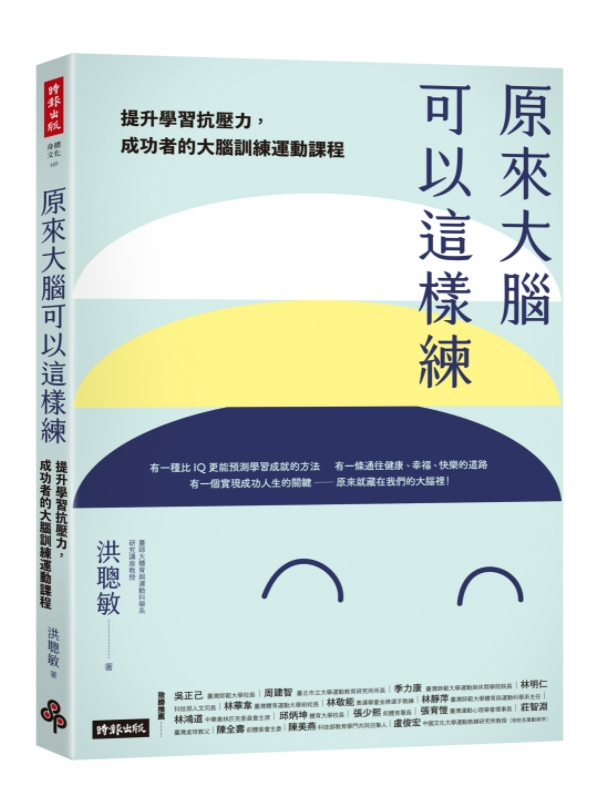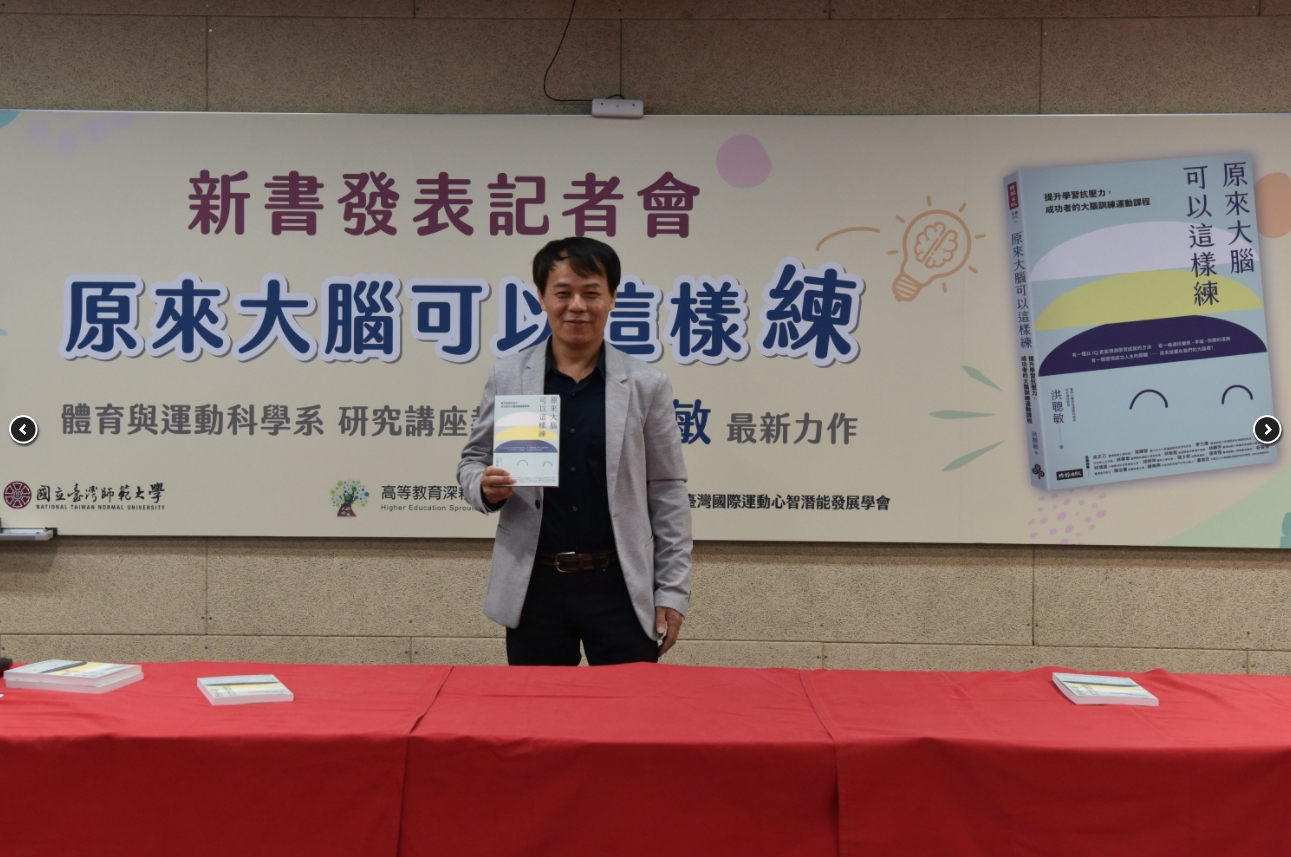ORIGINAL ARTICLE:本校公共事務中心 (2021.11.30)
(English Version Powered by ChatGPT, Edited by Serena H.)
“Exercise not only strengthens the body but also boosts the brain,” said Professor Hung Tsung-Min, Chair Professor of the Department of Physical Education and Sport Sciences at NTNU, who published the book “Train Your Brain This Way.” He proposes a “curriculum triad” model—combining cocktail-style programs, professional instruction, and social support—to effectively train the brain, help prevent Alzheimer’s, and improve learning performance.
For decades, it was believed that mature brains could no longer generate new neurons. After reaching adulthood, human brain neurons begin to degenerate, and cognitive abilities gradually decline.
However, increasing research evidence shows that adult brains can grow new neurons, especially when stimulated by exercise that targets cognitive function, which brings added benefits to the brain. In older age, exercise becomes a key factor in maintaining brain function.
💪Who Knew the Brain Could Be Trained Like This! Exercise Strengthens Both Body and Mind
Exercise not only trains the body but also enhances the brain’s “executive function.” Professor Hung uses simple and accessible graphics and text to translate a lifetime of research into popular science, publishing the book Who Knew the Brain Could Be Trained Like This. Through scientifically-backed exercise prescriptions, and the triad of appropriate exercise programming, one can enhance brain performance and achieve a healthier, more successful and fulfilling life. At the book launch event on November 29, Director Lin Ching-Ping of the PE Department, Chairman Chao Cheng-Min of China Times Publishing, and students and faculty of the LOHAS EMBA program all attended in support.
💪Upgrade Your Brain CEO—Evolve Executive Function, Build a Better Life
Hung points out that executive function, primarily governed by the prefrontal cortex, is like the “CEO of the brain,”and oversees three core abilities: working memory, inhibitory control, and cognitive flexibility.
Good working memory is like having an information manager in your brain, able to clarify thoughts and develop plans; inhibitory control helps resist temptations and focus on present tasks, enabling you to win the internal struggle; cognitive flexibility is for coping with environmental changes—it enables smooth adaptation between different rules or scenarios.
These three core abilities seem independent but are closely interconnected and cooperative. For example, to have strong cognitive flexibility, you must rely heavily on working memory, in order to retain, process, and continuously update incoming information, so that all data can be accessed and applied in an orderly manner.
Thus, “executive function” governs our daily behavior—from stopping at a red light to engaging in complex reasoning, all depend on executive function. Therefore, improving executive function performance naturally enhances critical thinking and decision-making, building an ideal life.
💪Exercise Strengthens Executive Abilities and Revives the Nervous System
But how can executive function be improved? Many integrative studies have shown that regular exercise in the long-run helps enhance overall executive function performance. Regarding this, Hung further explains: The evidence for exercise improving the three core executive functions lies in the fact that exercise enhances inhibitory control, which is the foundation for managing personal behavior through willpower.
Exercise not only boosts learning effectiveness in children with typical development, but is also beneficial for children with ADHD. Secondly, the power of exercise to improve working memory comes from the brain’s hippocampus, which produces Brain-Derived Neurotrophic Factor (BDNF).
BDNF is one of the most abundant proteins in the brain, which promotes the growth of neural cells, nicknamed “brain fertilizer.” Therefore, increasing BDNF levels through exercise further enhances working memory performance.
Exercise has even more remarkable results in improving cognitive flexibility. Regardless of age or group, physical activity can affect brain function. So as long as one is willing to change, everyone has unlimited potential. From this understanding, it is clear that whether in overt cognitive performance or underlying neurophysiological function, regular physical activity yields positive effects.
This view is based on two concepts in the brain’s nervous system: “neuroplasticity” and “neurogenesis.” Neuroplasticity refers to structural changes in the brain in response to environmental adaptations; the extent of neurogenesis affects memory clearance and cognitive flexibility.
Exercise and an enriched life environment can both promote neurogenesis. Exercise also affects important neuromodulatory systems in the brain: the norepinephrine system and the dopamine system. Too little or too much dopamine can hinder working memory performance. Proper levels of norepinephrine provide optimal inhibitory control, enhancing focus on goals. Clearly, exercise has a strong positive effect on improving executive function.
💪Exercise Builds a Fitter Body and Stronger Brain — The Curriculum Triad Solidifies Learning
It is now confirmed that exercise helps enhance executive function, but how to choose and design exercise content or programs is another important issue.
Australian psychologist J. Sweller proposed the “Cognitive Load Theory” in 2011, suggesting that exercises with higher cognitive load can better improve executive function. For example, depending on the characteristics of the task and environment, open-skill sports like table tennis are more complex than closed-skill activities like running, placing a greater cognitive load, and if training quality is emphasized, the cognitive benefits of exercise on executive function can be maximized.
Hung Tsung-Min advocates for certain principles in exercise program design. These should take into account the level of psychological engagement, by incorporating elements such as emotional interference, mental control, and exploration, to expand the variability of exercise contexts and conditions, which in turn helps improve executive function.
In practice, Hung shares the engaging and effective “Curriculum Triad” model, consisting of “cocktail-style courses,” “professional instructors,” and “social support.”
The apex of the triad is the cocktail-style course, where the exercise program serves as the vehicle for enhancing executive function, tailored to the needs of different groups, using five prescription principles: exercise type, progression rate, frequency, intensity, and duration, to create personalized exercise plans that suit each individual, and finally supplementing with mindfulness meditation, which allows learners to alternate between dynamic and static environments to reinforce executive function.
He noted that exercise forms, for example, should involve more skill to increase cognitive load. For instance, gymnastics or table tennis have greater benefits than simple running.
Exercise load should increase progressively on a daily basis, ideally, or at least 3 to 4 times a week. The exercise should reach moderate intensity, lasting 20 to 30 minutes per session.
The supporting point on the right of the triad is creating a learning environment full of fun and a sense of achievement. The key figure here is the professional instructors. As outstanding performance comes from ongoing repetition and cumulative improvement, the motivation to keep learning stems from an enjoyable and fulfilling environment.
The support point on the left of the triad is the power of social support. Through interactions with others, individuals subjectively feel respected and loved, leading from emotional recognition to affirmation of self-worth, which improves life adaptability and learning motivation, and reduces negative impacts caused by setbacks.
The book has received endorsements from numerous well-known individuals. NTNU President Wu Cheng-Chi described Hung Tsung-Min as “an athlete who loves using his brain.” Publishing this book and sharing his research helps benefit society. Lin Ming-Jen, Director of the Department of Humanities at the Ministry of Science and Technology, said that the impact of exercise on cognitive function has long been overlooked.
Hung Tsung-Min’s publication of a popular science book on brain health not only translates scientific research into knowledge accessible to the public, but also, as our country enters the phase of super-aged society, enables citizens to enhance quality of life through exercise, and create a better, more fulfilling life.

洪聰敏教授提到,運動不只能促進健康,還能有助於鍛鍊大腦,
不只能預防阿茲海默症,也能幫助小朋友訓練腦力並提升學習效果,因此希望推動運動2.0的概念,讓大家知道運動除了強身還能健腦。

貴賓合照

洪聰敏教授藉由淺顯易懂的圖文,將畢生研究心血化為科普知識,
出版《原來大腦可以這樣練》一書。


貴賓合影

